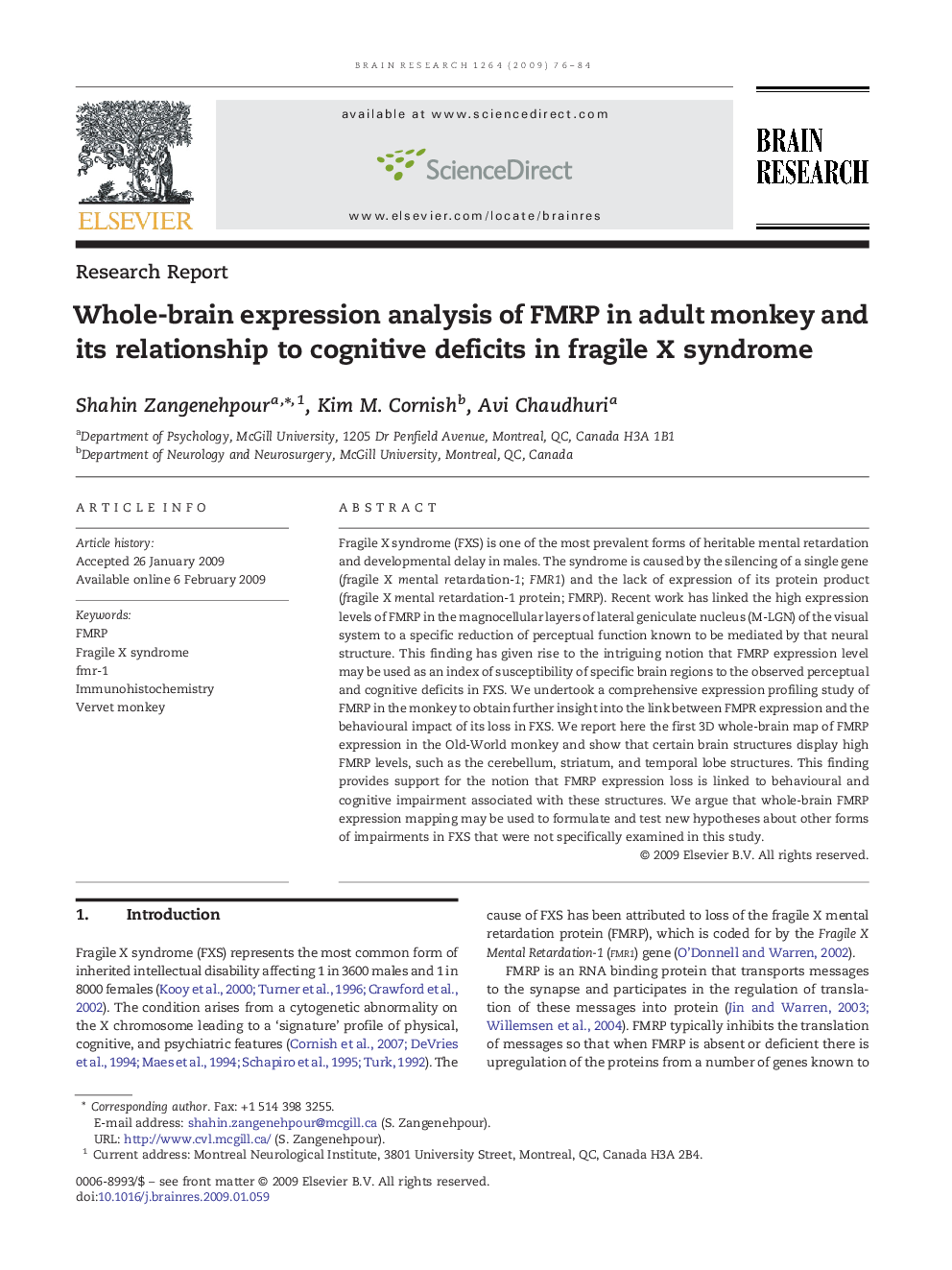| Article ID | Journal | Published Year | Pages | File Type |
|---|---|---|---|---|
| 4328513 | Brain Research | 2009 | 9 Pages |
Fragile X syndrome (FXS) is one of the most prevalent forms of heritable mental retardation and developmental delay in males. The syndrome is caused by the silencing of a single gene (fragile X mental retardation-1; FMR1) and the lack of expression of its protein product (fragile X mental retardation-1 protein; FMRP). Recent work has linked the high expression levels of FMRP in the magnocellular layers of lateral geniculate nucleus (M-LGN) of the visual system to a specific reduction of perceptual function known to be mediated by that neural structure. This finding has given rise to the intriguing notion that FMRP expression level may be used as an index of susceptibility of specific brain regions to the observed perceptual and cognitive deficits in FXS. We undertook a comprehensive expression profiling study of FMRP in the monkey to obtain further insight into the link between FMPR expression and the behavioural impact of its loss in FXS. We report here the first 3D whole-brain map of FMRP expression in the Old-World monkey and show that certain brain structures display high FMRP levels, such as the cerebellum, striatum, and temporal lobe structures. This finding provides support for the notion that FMRP expression loss is linked to behavioural and cognitive impairment associated with these structures. We argue that whole-brain FMRP expression mapping may be used to formulate and test new hypotheses about other forms of impairments in FXS that were not specifically examined in this study.
